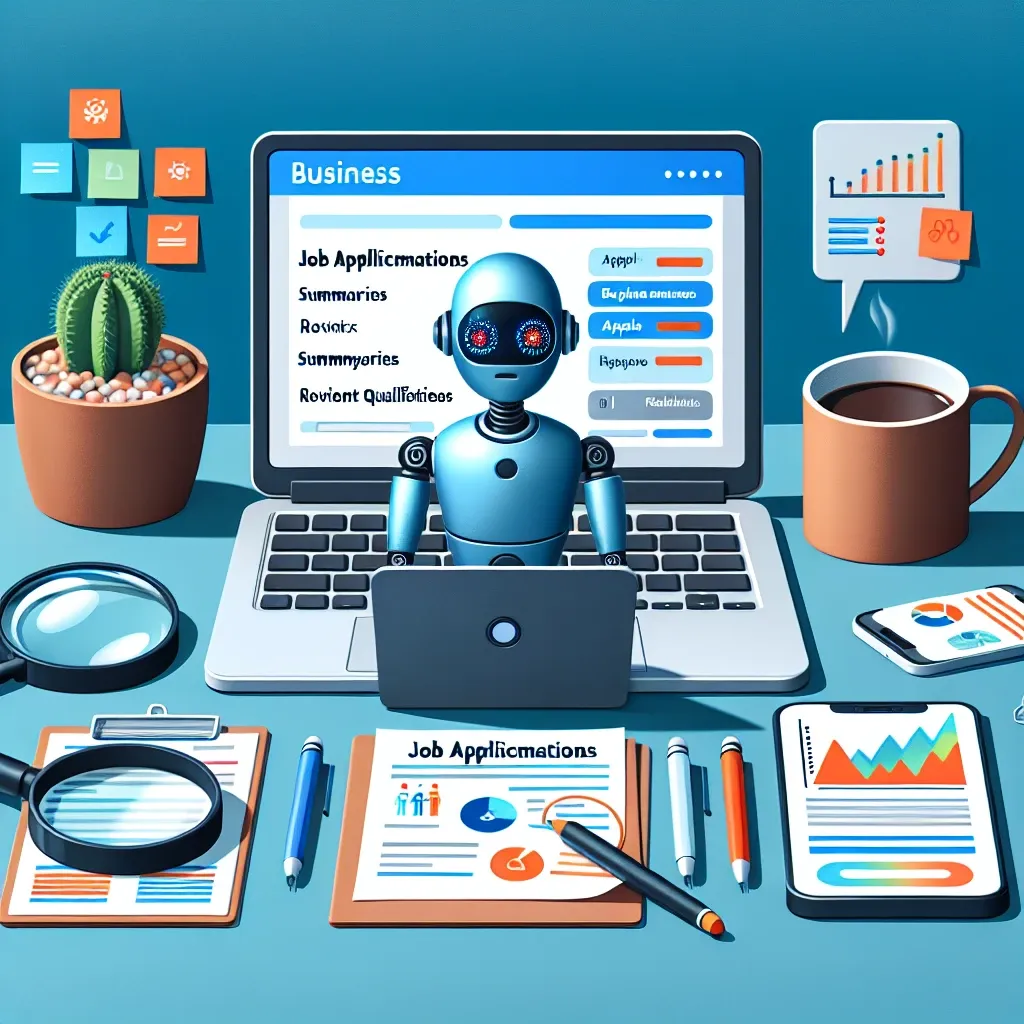Introduction
In the competitive landscape of recruitment, efficiency and accuracy are paramount. LinkedIn, a leading professional networking platform, is at the forefront of innovation with its recent initiative to test AI-powered job application summaries for recruiters. This development promises to streamline the hiring process, allowing recruiters to sift through applicants more effectively and make informed decisions faster.
Understanding AI-Powered Job Application Summaries
AI-powered job application summaries leverage advanced algorithms and machine learning to condense applicant information into concise summaries. These summaries highlight key qualifications, skills, and experiences, making it easier for recruiters to assess candidates at a glance.
The Technology Behind AI Summaries
The backbone of LinkedIn’s AI technology lies in natural language processing (NLP) and machine learning. NLP enables the AI to understand and interpret human language, while machine learning allows it to learn from patterns in data over time. This combination allows the AI to generate accurate and relevant summaries based on the information provided in job applications.
Benefits for Recruiters
- Time Efficiency: Recruiters can save a significant amount of time by quickly reviewing AI-generated summaries instead of reading through entire resumes.
- Enhanced Decision-Making: Summaries provide a clear overview of candidate qualifications, facilitating better hiring decisions.
- Reduction of Bias: With standardized summaries, the potential for bias in the hiring process may be minimized, as decisions are based more on data rather than subjective interpretations.
Historical Context of AI in Recruitment
The integration of artificial intelligence into recruitment is not entirely new. Over the past decade, various technologies have emerged aimed at improving hiring processes. From applicant tracking systems (ATS) to chatbots handling initial candidate inquiries, AI has steadily made inroads into the HR landscape. However, LinkedIn’s initiative marks a significant evolution in this trend by providing a more sophisticated tool that directly addresses the needs of recruiters.
Past Innovations
Historically, tools like ATS helped streamline the application process by filtering candidates based on keywords. While effective, these systems often overlooked candidates with relevant skills but non-traditional experience. LinkedIn’s AI summaries aim to bridge this gap by providing a holistic view of candidates.
Future Predictions
As AI technology continues to evolve, we can anticipate even more advanced tools in recruitment. Future innovations may include deeper personalization of summaries, integration with diversity hiring initiatives, and real-time analysis of market trends that influence hiring practices.
Challenges and Considerations
Despite the benefits, the implementation of AI in recruitment presents several challenges. It is essential to remain aware of the limitations of AI systems, including potential biases encoded in algorithms and the need for human oversight.
Pros and Cons
- Pros:
- Increased efficiency in screening candidates.
- Data-driven insights for better recruitment strategies.
- Potential for a more diverse candidate pool.
- Cons:
- Risk of bias if the AI is trained on skewed data.
- Overreliance on technology may overlook human intuition.
- Need for ongoing adjustments and training of the AI system.
How Recruiters Can Adapt
Recruiters must adapt their strategies to leverage AI tools effectively. Here are some steps recruiters can take to integrate AI-powered summaries into their hiring process:
Step-by-Step Guide
- Familiarize Yourself with the Tool: Understand how the AI-powered summary generation works and familiarize yourself with its features.
- Training and Calibration: Regularly train the AI with updated data to ensure it reflects current job market trends and candidate profiles.
- Combine Human Insight: Use AI summaries as a starting point but employ human judgment to assess candidates holistically.
- Feedback Loop: Establish a feedback mechanism where recruiters can provide insights on the effectiveness of AI summaries, allowing for continuous improvement.
Real Examples of Success
Several organizations that have implemented AI-driven recruitment tools have reported significant improvements in their hiring processes. For instance, a tech startup that adopted AI summaries found that their time-to-hire decreased by 30%, allowing them to onboard qualified candidates faster than ever before.
Cultural Relevance
In today’s fast-paced job market, the ability to adapt quickly is crucial. Industries are evolving rapidly, and so are the skills required to succeed in them. LinkedIn’s AI-powered summaries are not just a technological advancement; they reflect a cultural shift towards efficiency, diversity, and inclusion in hiring practices.
Conclusion
As LinkedIn continues to test and refine its AI-powered job application summaries for recruiters, the potential impact on the recruitment landscape is profound. By embracing these technologies, recruiters can enhance their efficiency, make more informed decisions, and contribute to a fairer hiring process. The future of recruitment may very well hinge on the successful integration of AI in these crucial processes.

Leave a Reply